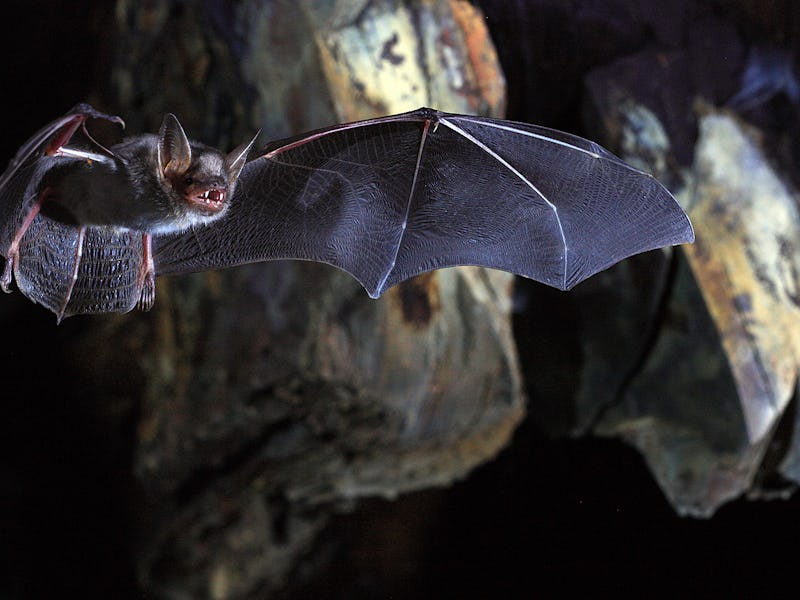Bats, Cockroaches, and Other Critters Are Teaching Robots How to Save Lives
Creepy but cool.

You may want to take it a little easy on the critter the next time you spot a cockroach in your kitchen, you may be relying on his grandchildren to save your life one day.
In fact, researchers have long recognized the robustness of the noble cockroach as having potentially life-saving applications. A 2016 study from researchers at North Carolina State University developed a mapping system that would allow cockroaches, computers, and drones to work together to explore collapsed building structures and find victims.
And that was only the beginning. Just yesterday, some researchers at the University of Connecticut announced that they have developed a kind of cockroach cyborg that they say is already being tested for use in rescue missions. Their method involves retrofitting the little guy with a cute backpack, equipped with tiny wires that connect to the cockroach’s antennae. Researchers can then use electrical signals to trick the cockroach into sensing obstacles in certain directions, this manipulating their movements remotely.
“The use of insects as platforms for small robots has an incredible number of useful applications,” said Abhishek Dutta, a professor at the University of Connecticut who worked on the cockroach-steering circuit, in a statement. “Our microcircuit provides a more sophisticated and reliable control system that brings us one step closer to real world implementation.”
And you wanted to swat these helpful little guys with a newspaper!
These cyborg cockroaches are effectively steered by using electrical signals to trick its antennae into detecting obstacles.
Using Bats and Other Animals to Teach Robots
Cockroaches are hardly the only member of the animal kingdom that are helping robots help humans. Robots that look like monkeys, robots that look like jellyfish, and robots that look like bats have all been designed and often prototyped with the goal of creating machines that can compensate for humanity’s irksome shortcomings, like being unable to squeeze under closed doors or see in the dark.
Robots inspired by bats, in particular, seem to be showing a lot of promise, according to another critter-related robotics study that was published this week. This new research, from engineers at Tel Aviv University, describes a new kind of fully autonomous “robat” (though we prefer batbot, if we’re being honest) capable of using sonar to explore and map out novel environments.
“Our Robat is the first fully autonomous bat-like biologically plausible robot that moves through a novel environment while mapping it solely based on echo information,” Itamar Eliakim explains. “We show the great potential of using sound for future robotic applications.”
This "robat" (we prefer batbot, if we're being honest) uses sonar to navigate just like bats do.
These batbots, (sorry, Robats) are pretty sophisticated, and use a combination of a speakers and microphones to produce little bat-like “chirps” to map their surroundings in real time. The system is effective enough for the Robats to detect full shapes and their borders, not just when there’s something in front of it, which the researchers say can be used to create detailed and accurate maps.
The authors of the Robat study say that while lots of studies have demonstrated how bats solve the same problem as robots have — not being able to see — this is the first robot that’s actually put this method into practice by developing a real, bat-chirp-steered, autonomous robot.
While it sometimes feels like exploring the planet we live on is old news, especially when compared to the robots that are already mapping out other planets, there’s still a lot we don’t know about our own home, from what’s going on in the deep and mid-pelagic ocean to how many rivers and streams we have on earth’s surface. These lil’ guys seem pretty well equipped to help us solve those mysteries, with the potential to one day start saving lives.
So apologies in advance to all our cockroach and bat-like friends. Consider our newspapers, and our brooms, re-sheathed.